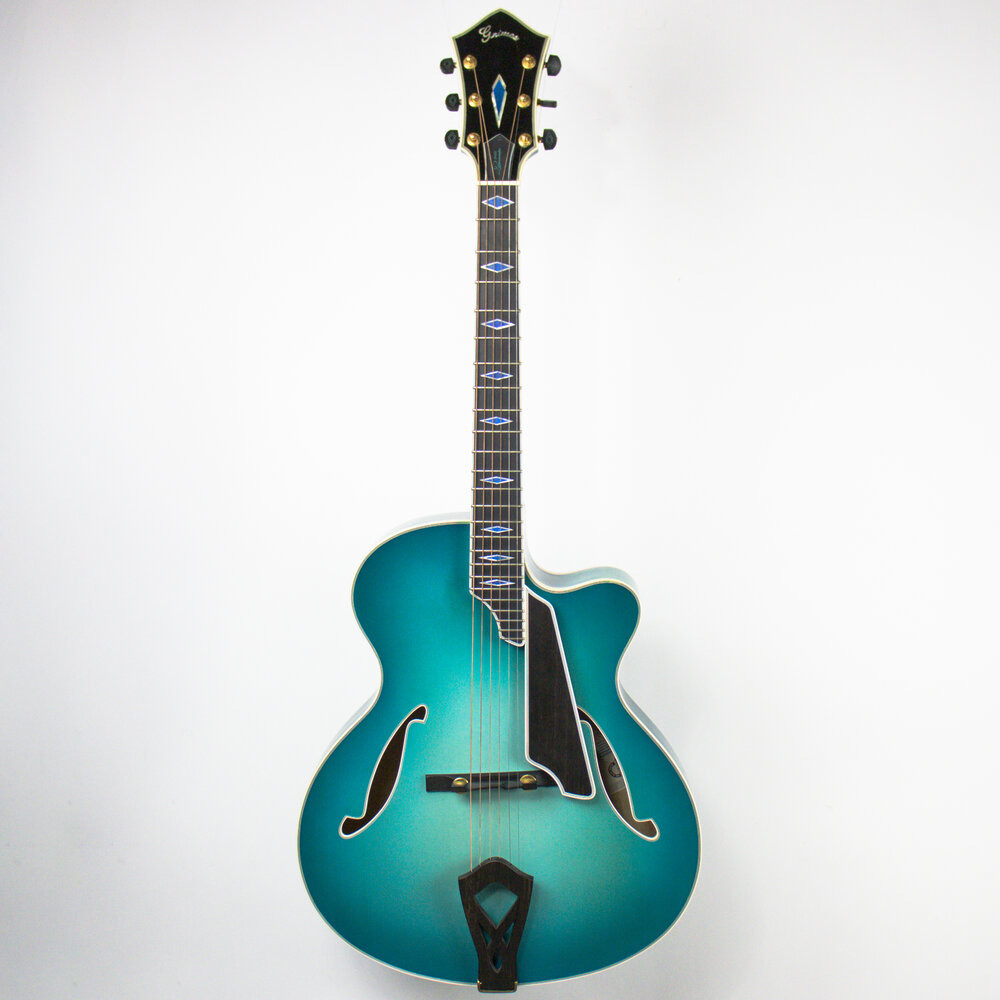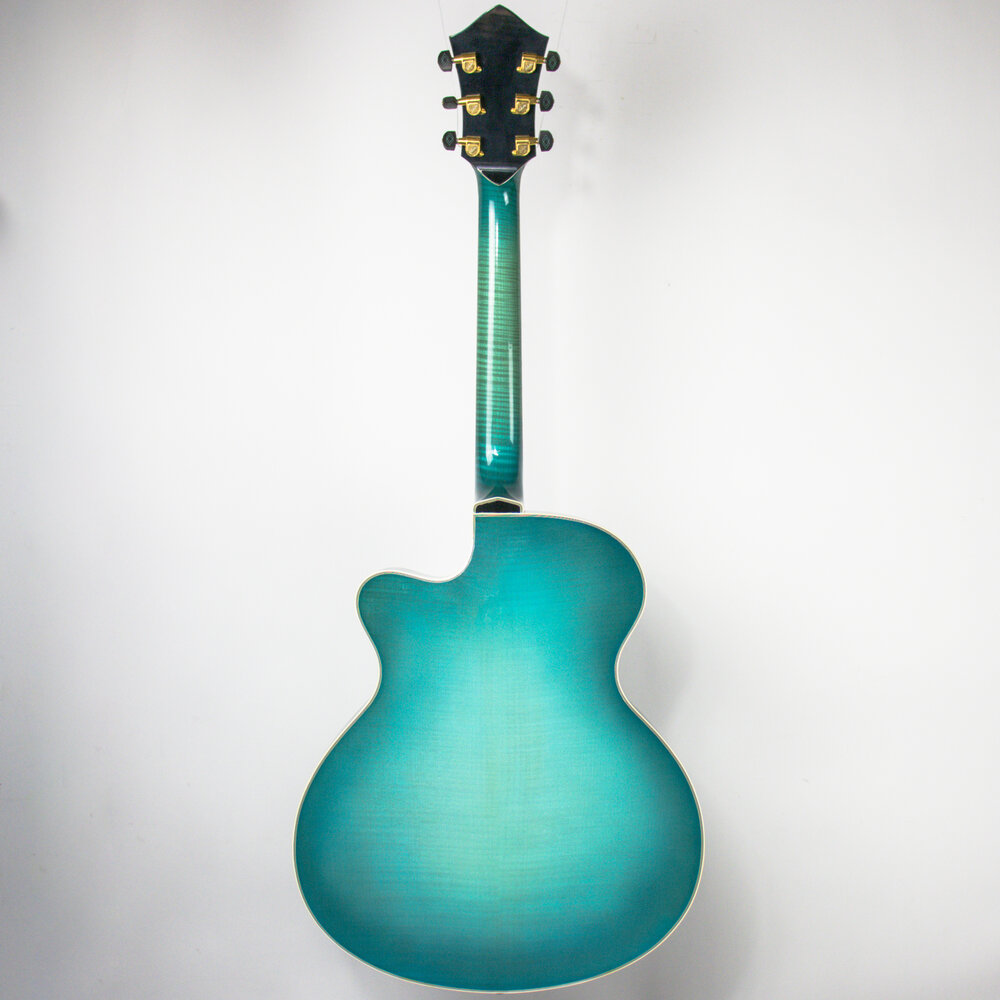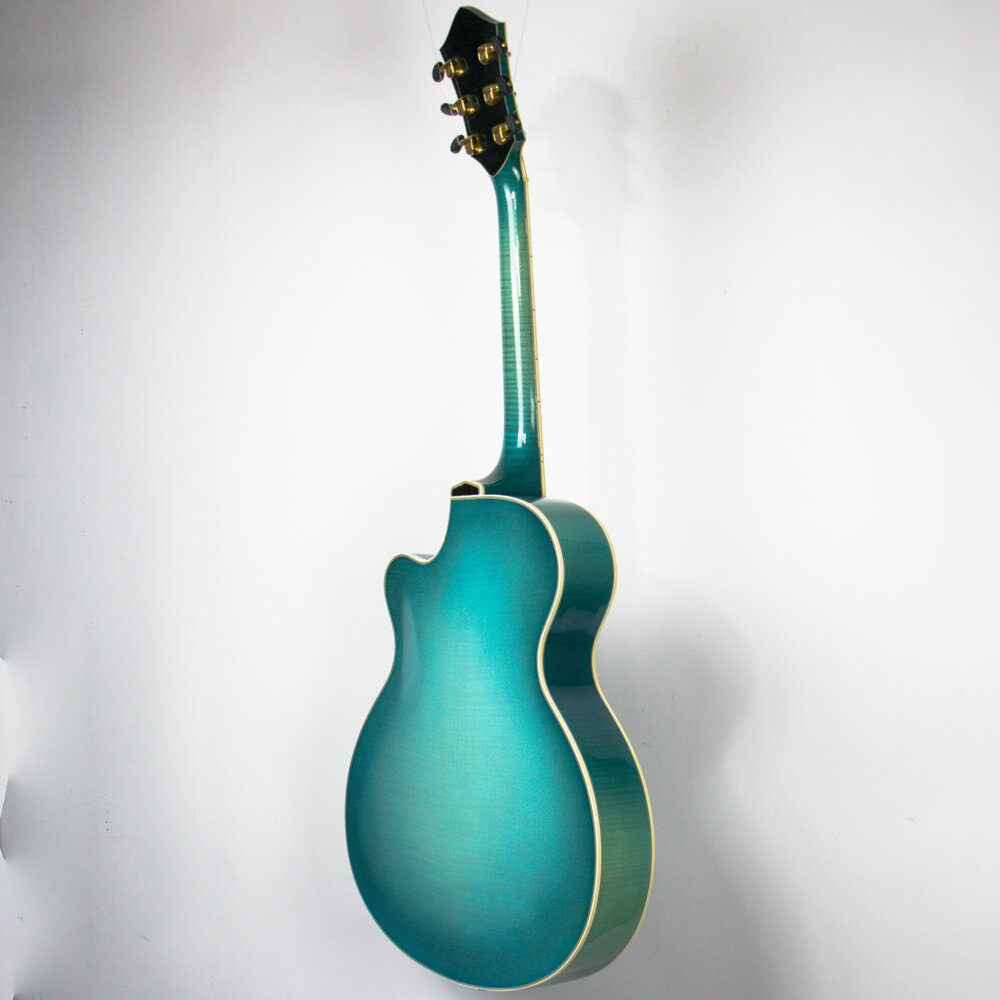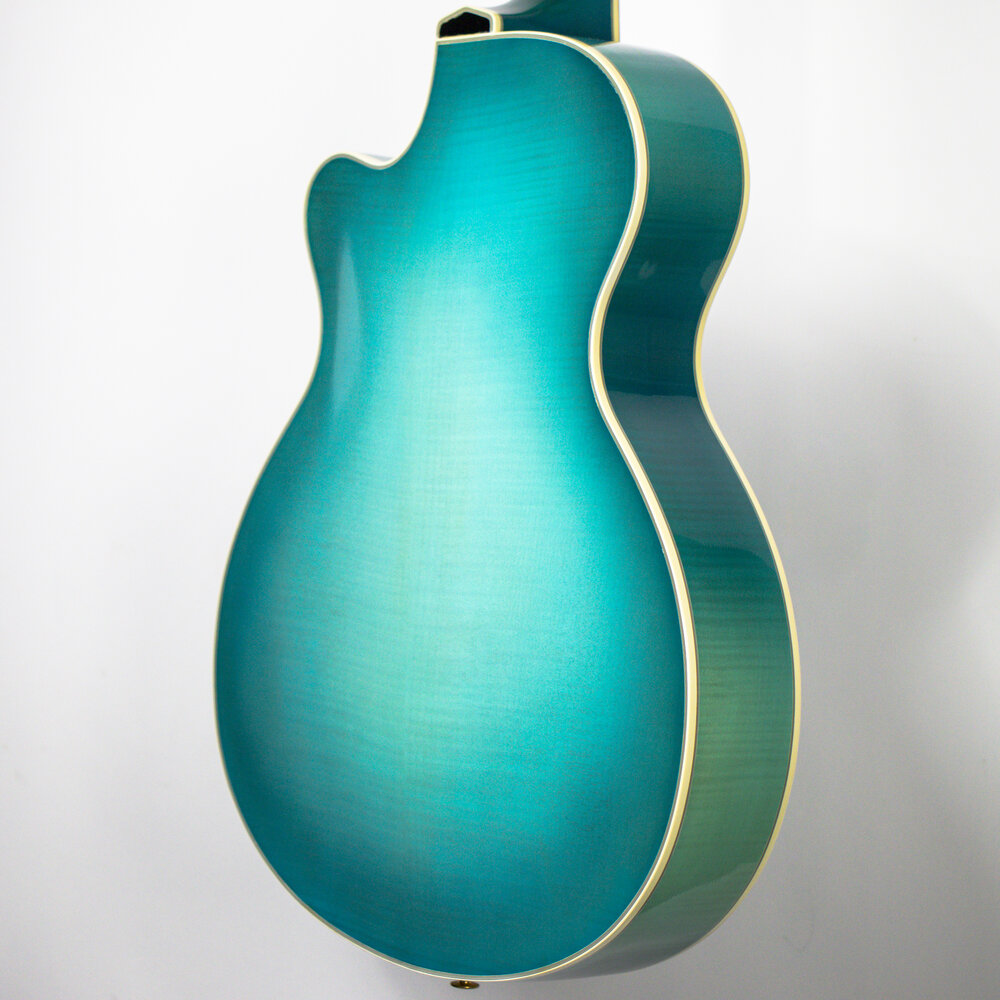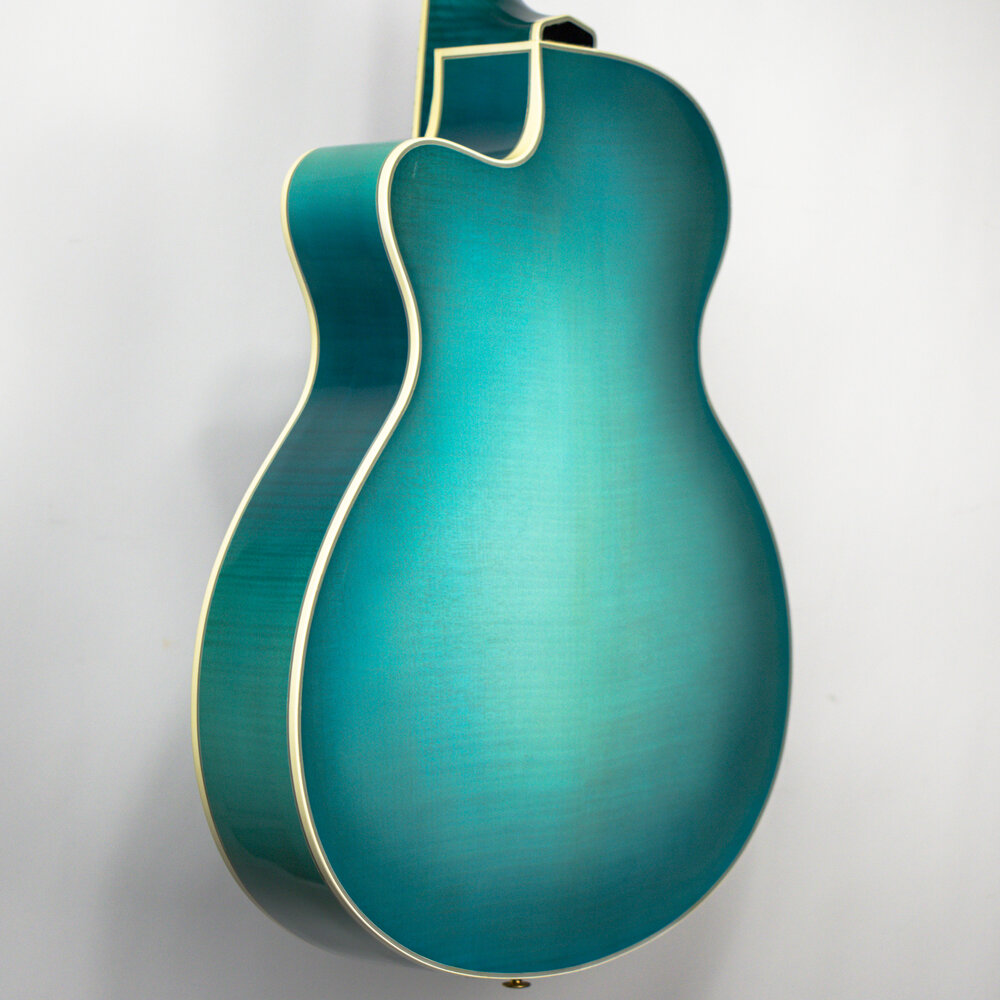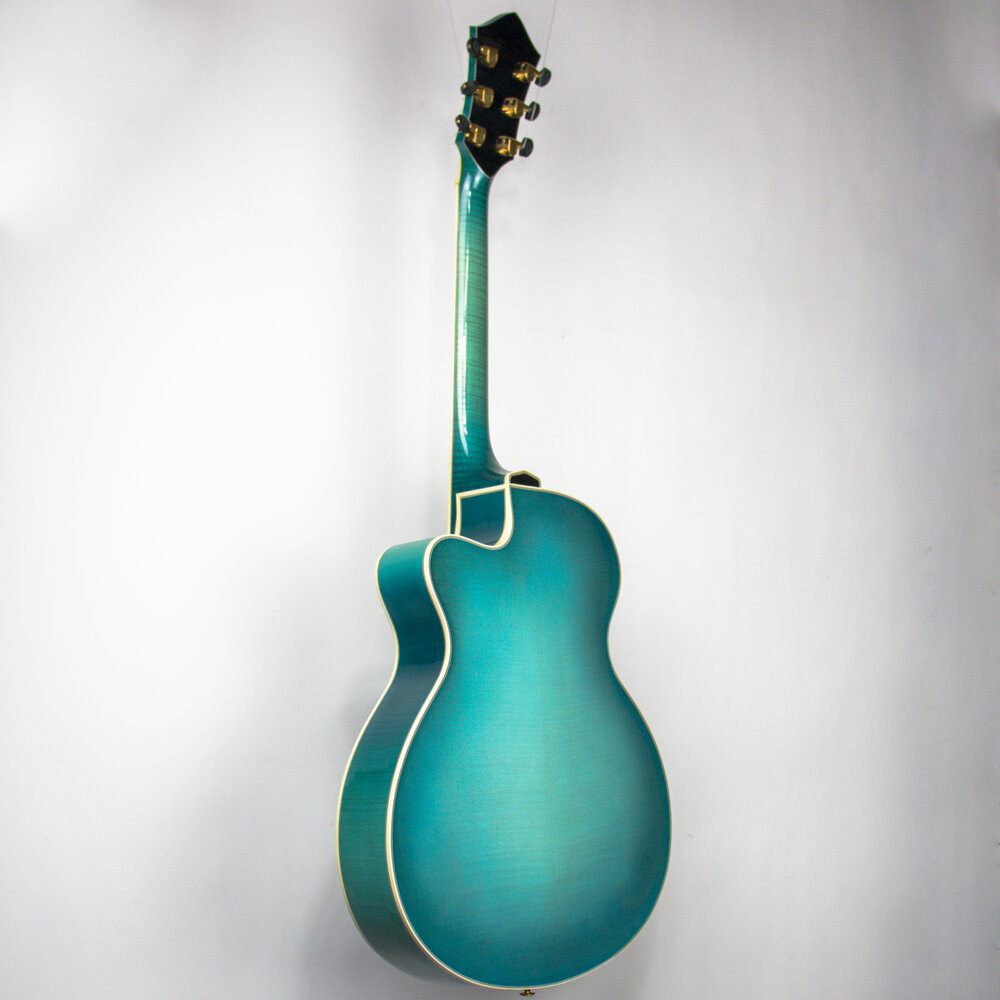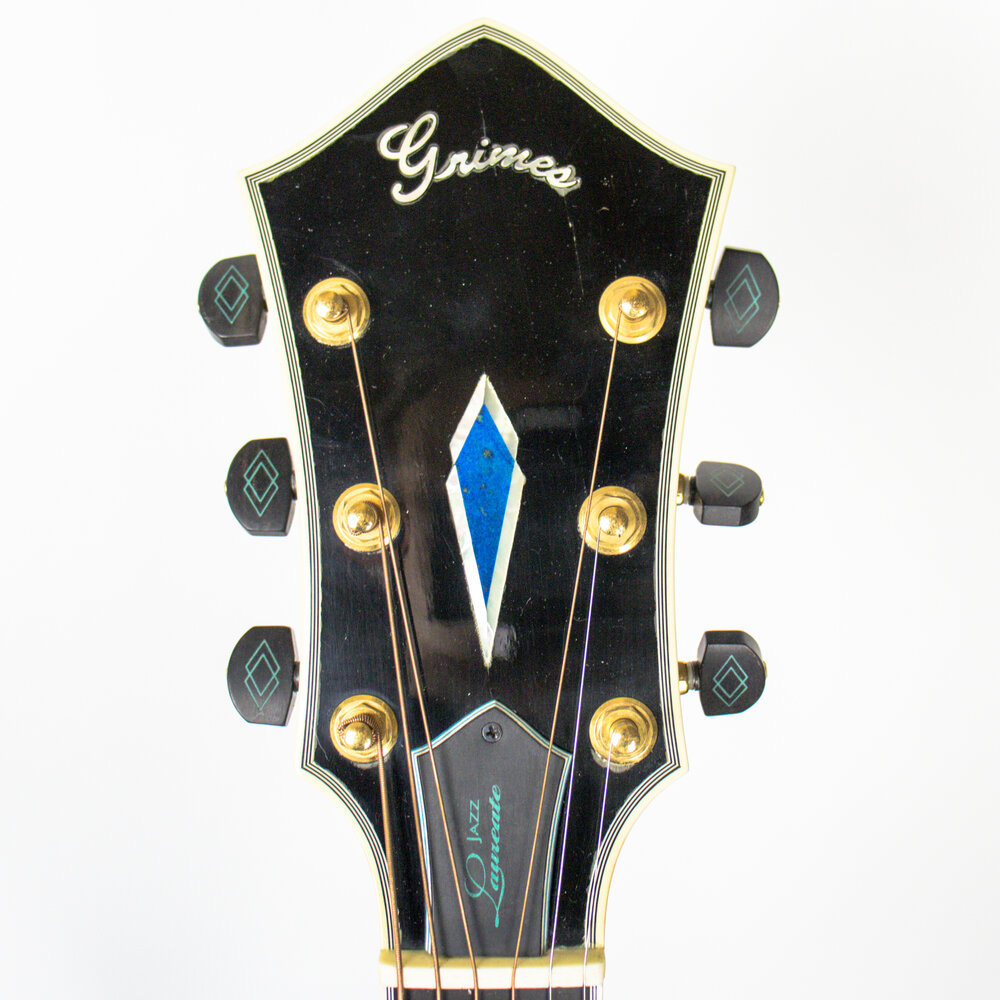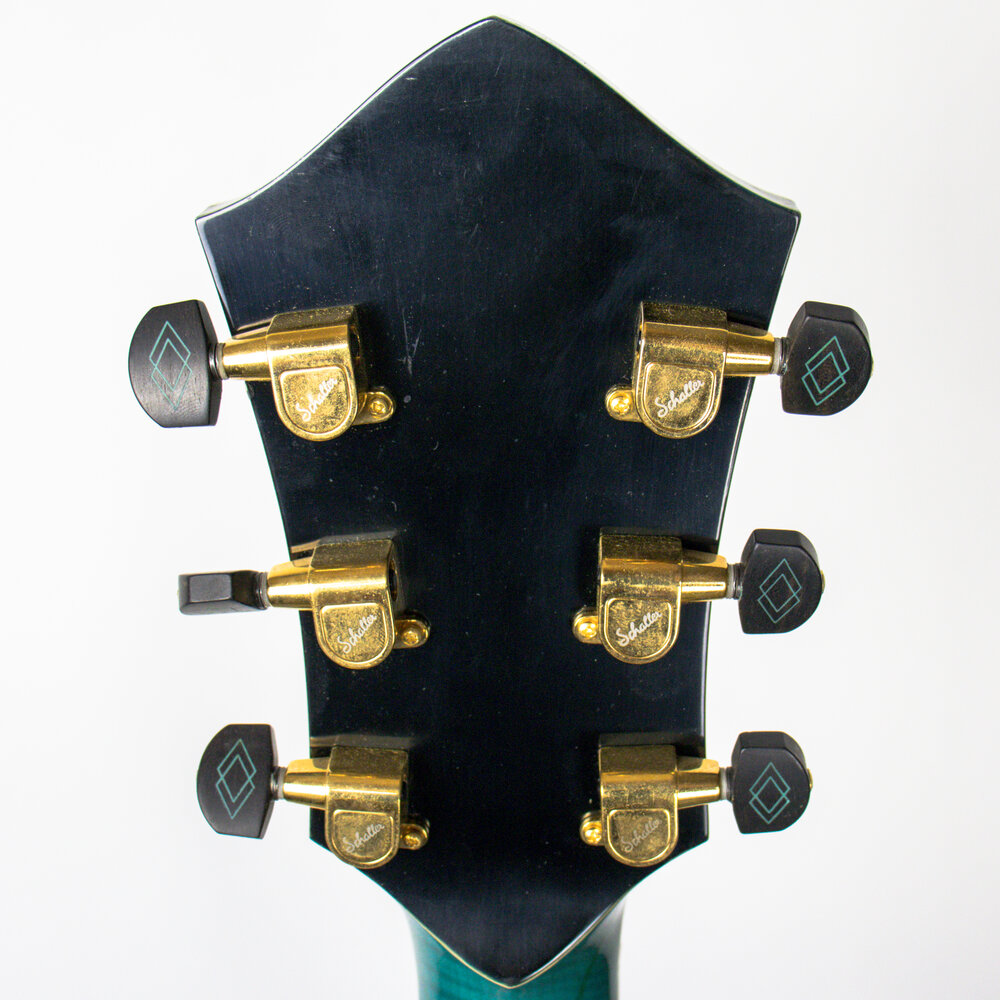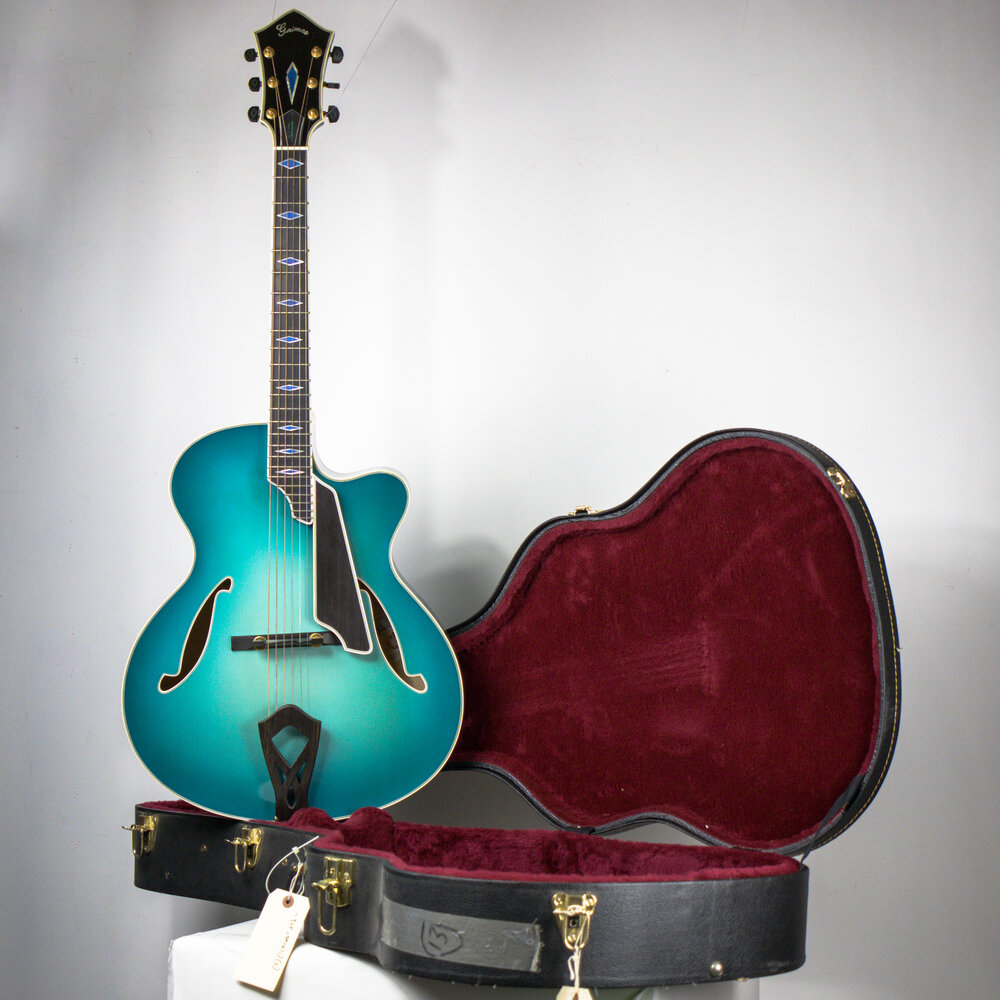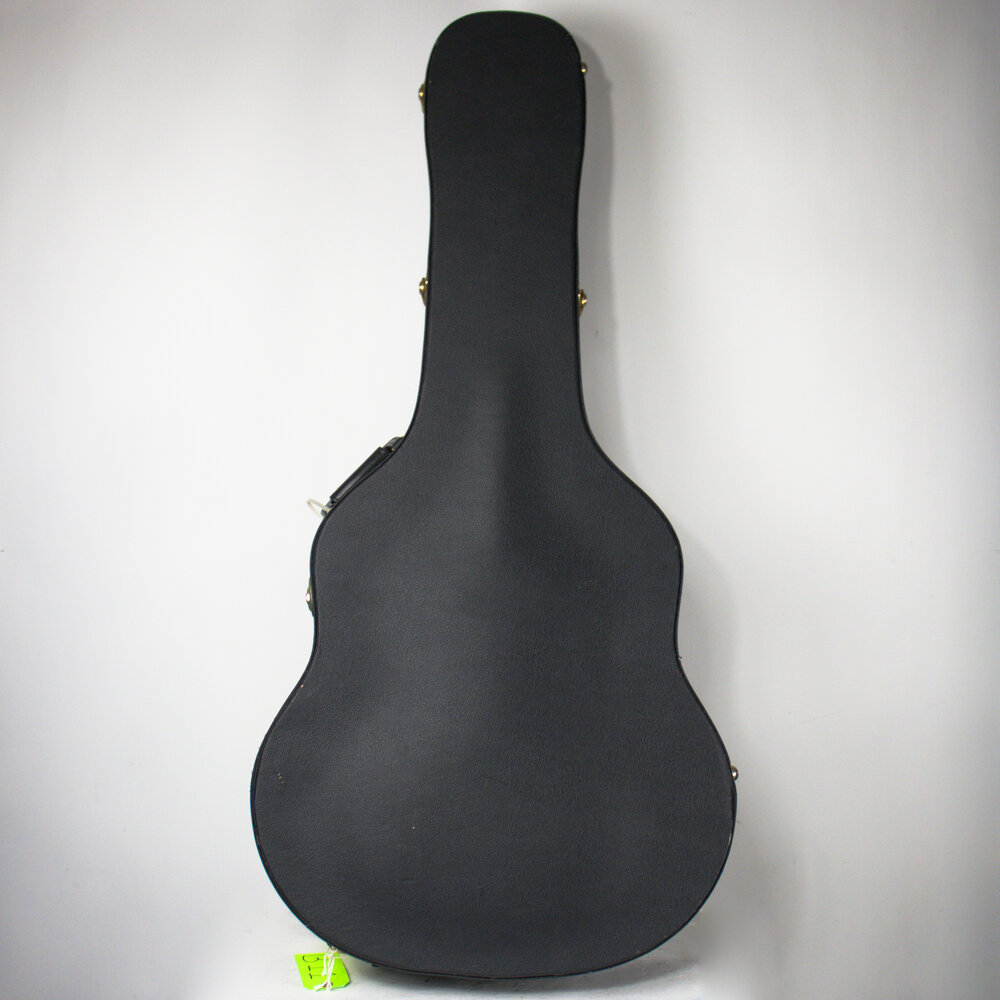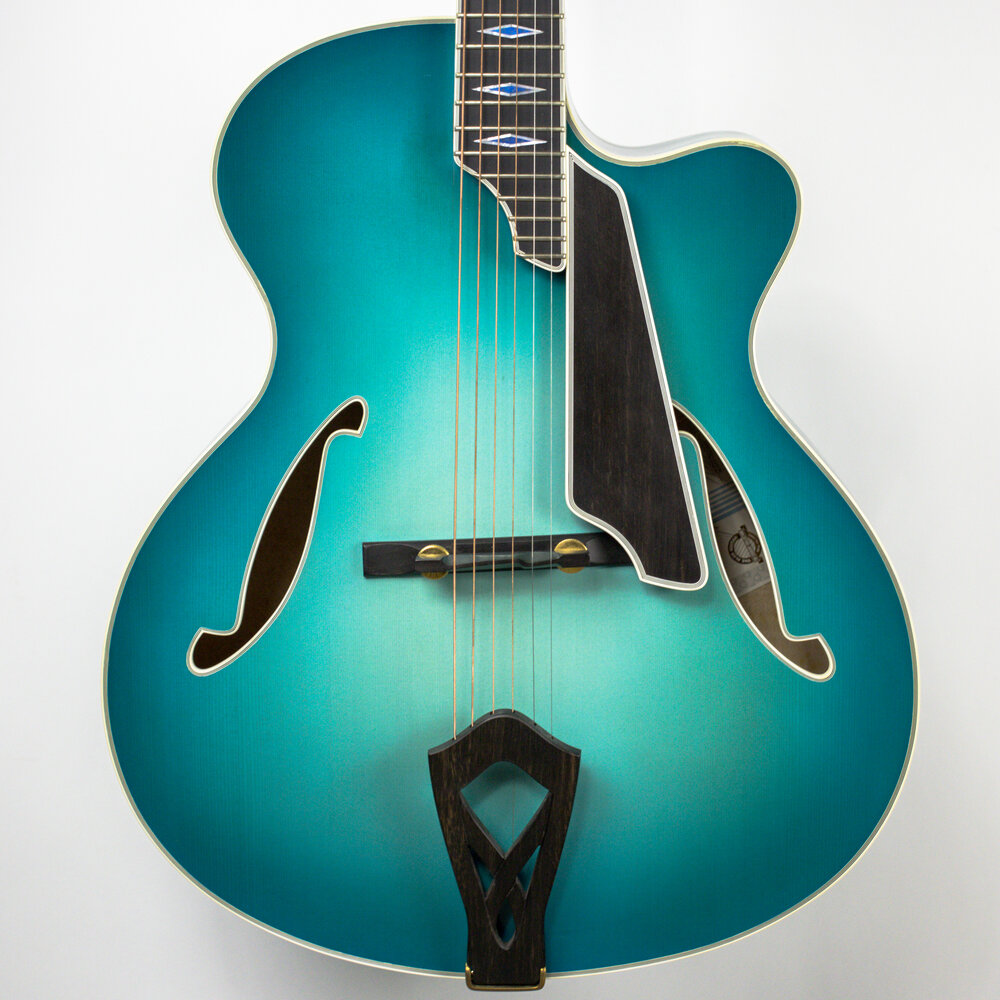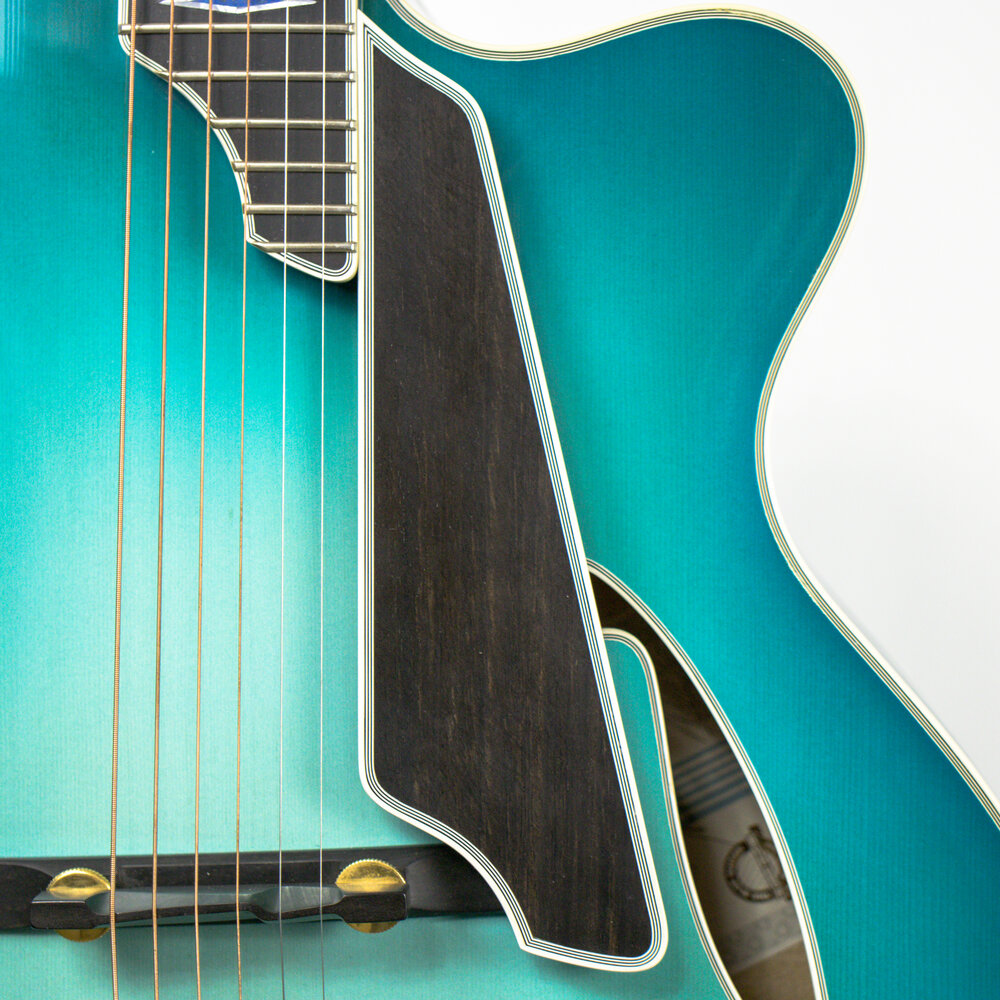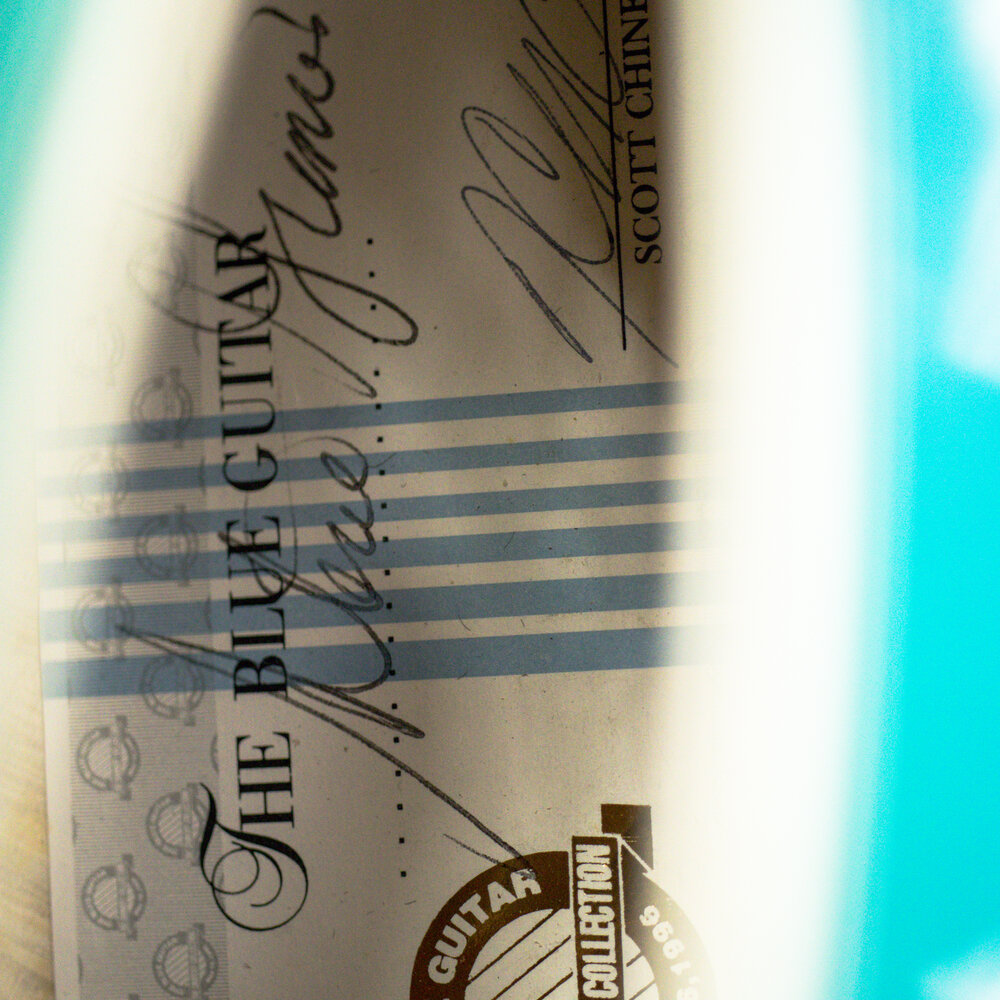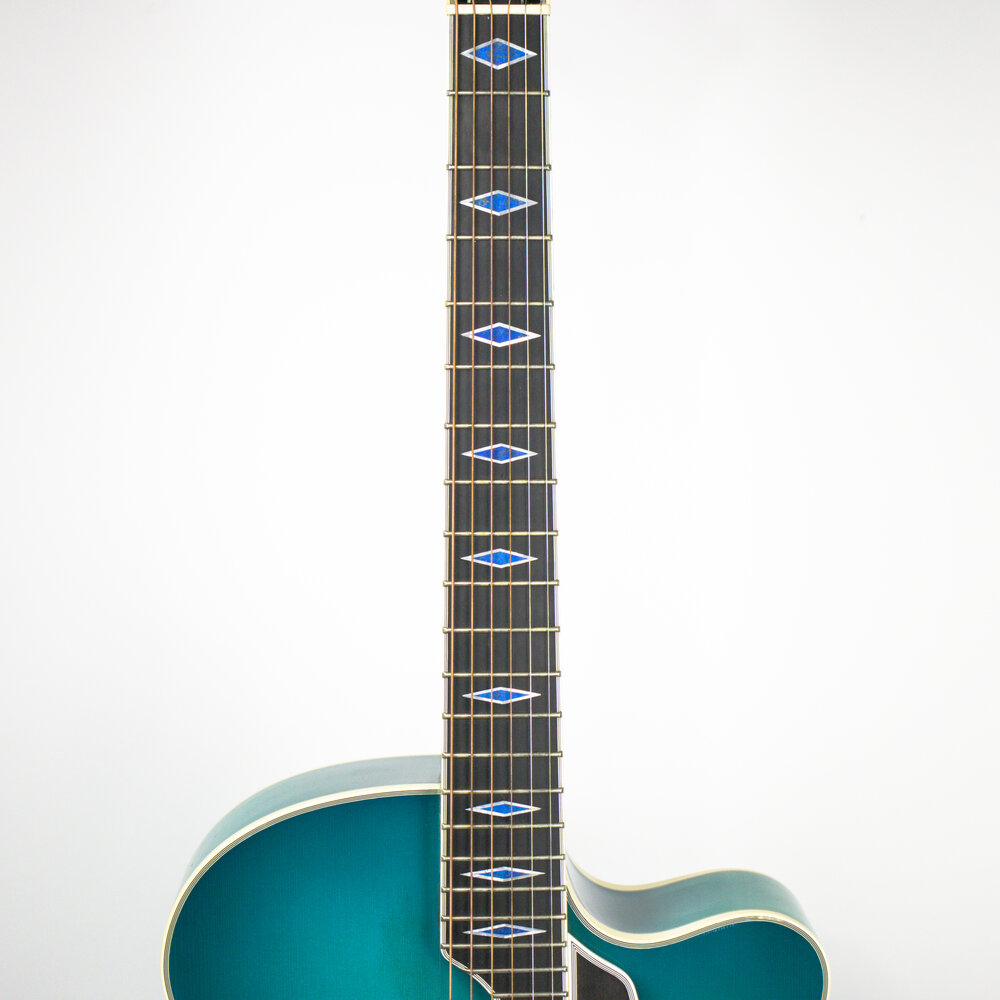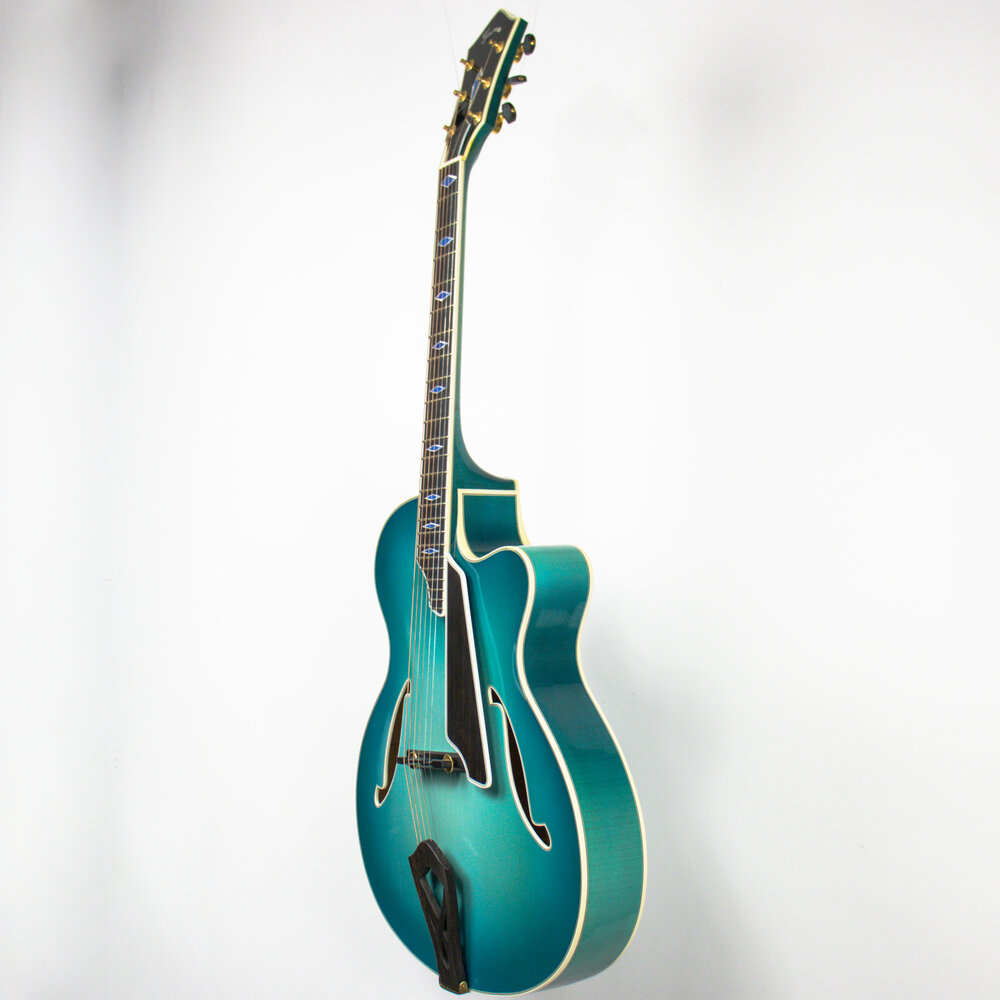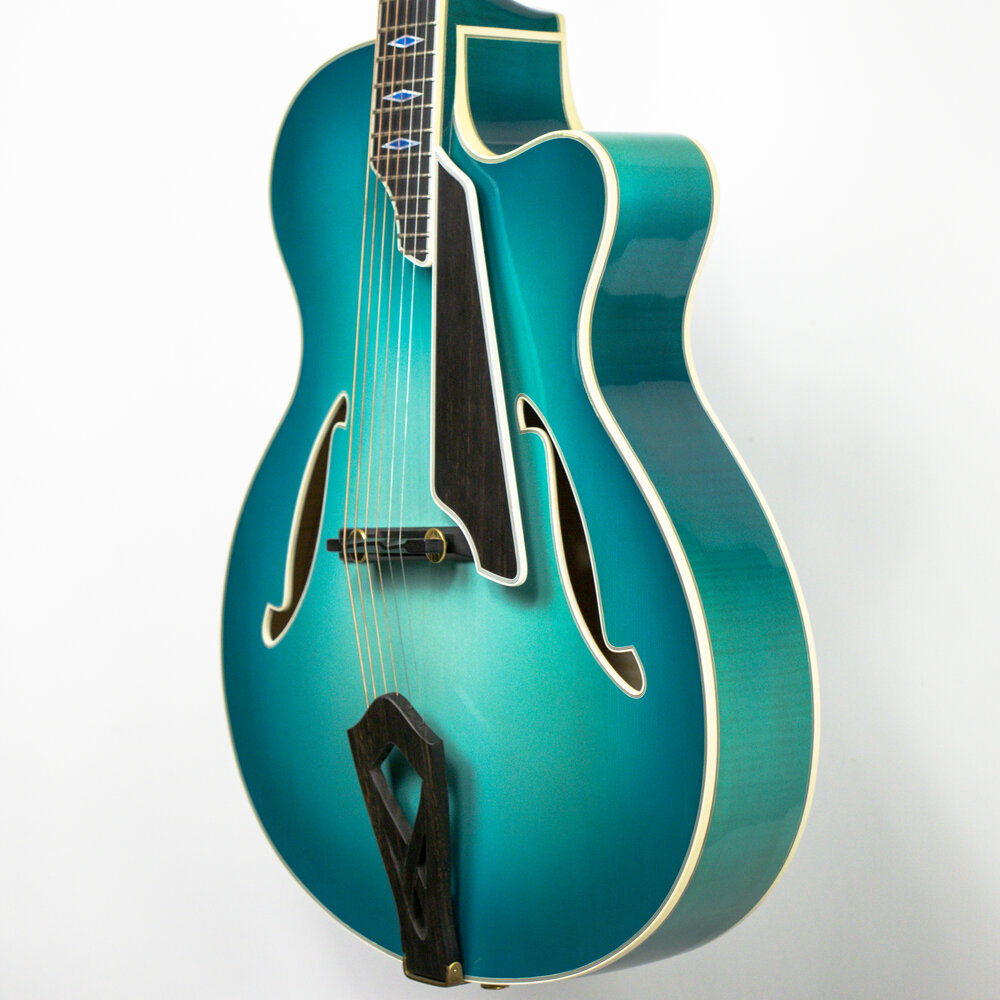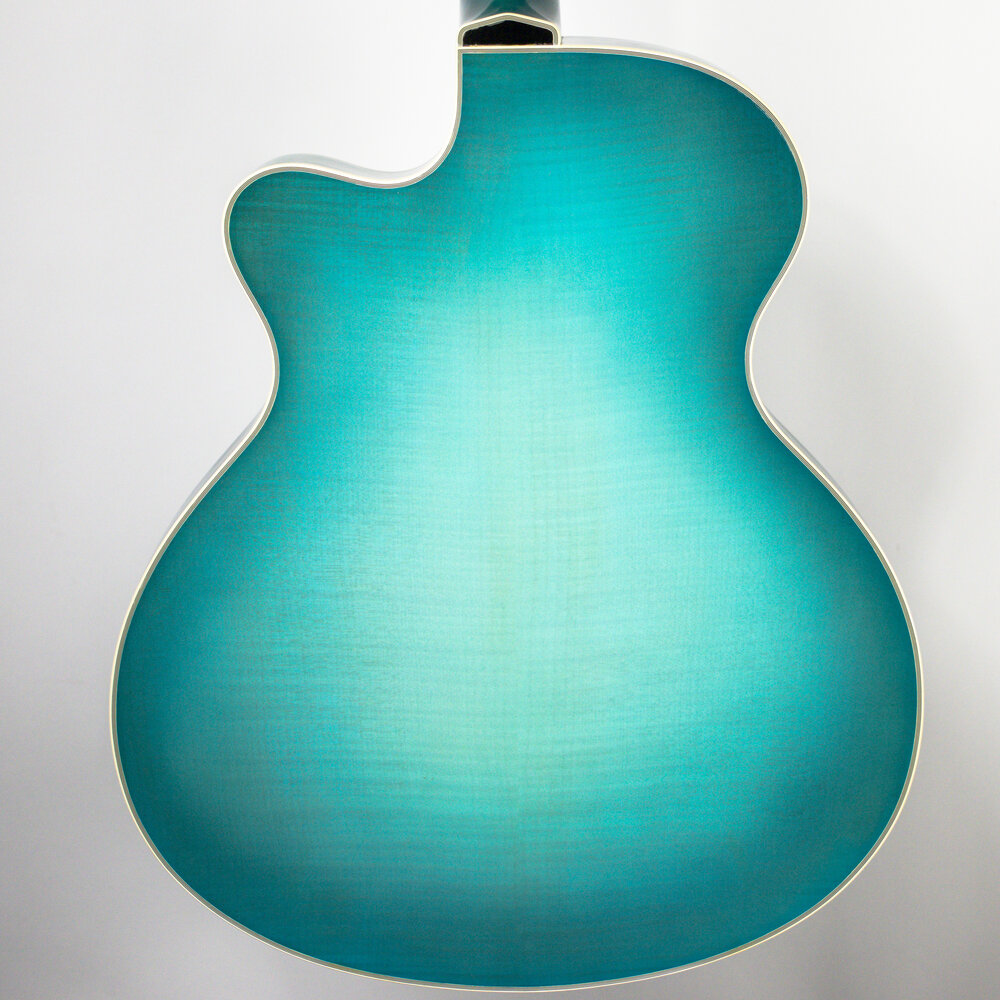Steve Grimes–Jazz Laureate

Steve Grimes with The Jazz Laureate
Steve Grimes spent time as a draftsman at Boeing while working part-time as both a woodworker and musician and in 1972, Grimes found himself fascinated by the prospect of combining these professions. After studying with a violin maker and working in the instrument repair trade, Grimes set up his own shop in Seattle, Washington, USA and began making arch top mandolins.
Being more of a guitar player than a violin or mandolin player, Grimes found that his interests were leaning more toward guitar construction, and in 1974 he began making acoustic arch top guitars. In 1982, Grimes began making two new types of flat top guitars (a steel string and a classical), a semi hollow body archtop electric, and an oval soundhole acoustic arch top.
Grimes Guitars is a relatively small shop producing instruments slowly and meticulously by hand. Close attention to detail, such as tuning top and back plates, often missing in production guitars, is fundamental in each instrument. The advantage to building a few instruments at a time from start to finish is being able to control the response and tonal characteristics as each instrument progresses. This process takes time, and a commitment to achieving the fullest tonality and vibrance the wood has to offer. About twenty guitars are produced in the shop annually.

Steve Grimes checks out The Jazz Laureate
When the time came to select luthiers for the Blue Collection project, Steve was amongst the first called; he had already been commissioned for three previous guitars by Scott Chinery. What is less well appreciated was the role he played as a trusted advisor to Scott Chinery on who should be included in the collection. Just as Steve Howe of Yes parlayed his friendship with Scott into getting European players (Martin Taylor) and luthiers (Theo Scharpach) into the collection, Steve was able to add three of the luthiers onto the list that Scott hadn’t considered, thinking that those luthiers (Mark Lacey, Bill Collings and Kim Walker) only made flat tops. While most of the luthiers didn’t consult with others, Steve and Bill Collings helped solve the issue of keeping their guitars blue–not only agreeing that it was necessary to bleach the underlying wood to preserve the blue, but also experimenting to come up with the best formulas for doing so. While the colors of those two guitars are notably bluer than many of the others, the best hint of the original color can be seen in the color of the lapis fret markers. Since they are made of stone and were closely color-matched to the original dye, you can judge how time has affected the Grimes Jazz Laureate.

The first notes in a while
Grimes’ Jazz Laureate features a European spruce top, European maple back sides and neck, and an ebony fingerboard, bridge pickguard, tailpiece, tuning buttons and peghead overlay. The inlay on the peghead is a double diamond of lapis, surrounded by mother-of-pearl, and a similar design is featured on the fingerboard inlay as well. Creating the lapis lazuli fret markers by itself was a considerable challenge. Without stone grinding equipment, he brought the lapis to a jeweler to prepare. It wasn’t merely a function of the jeweler cutting the lapis pieces to the desired diamond shapes–Steve also had to ensure that the pieces were not only of the correct depth, but precision ground to the same 12″ radius of the fretboard.
